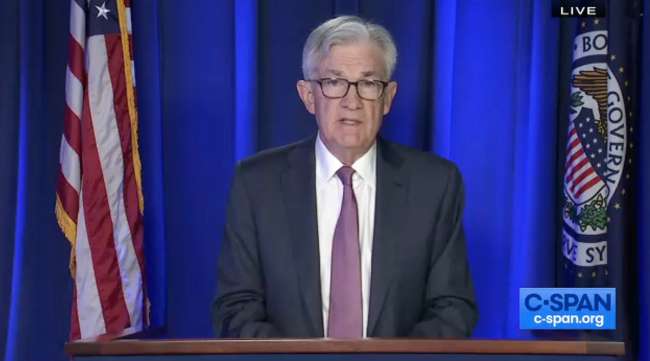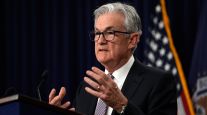Fed Lifts Rates a Quarter Point in Opening Bid to Curb Inflation

[Stay on top of transportation news: Get TTNews in your inbox.]
The Federal Reserve raised interest rates by a quarter percentage point and signaled six more such hikes this year, launching a campaign to tackle the fastest inflation in four decades even as risks to economic growth mount.
Policymakers led by Chair Jerome Powell voted 8-1 to lift their key rate to a target range of 0.25% to 0.5%, the first increase since 2018, after two years of holding borrowing costs near zero to cushion the economy from the pandemic. St. Louis Fed President James Bullard dissented in favor of a half-point hike, the first vote against a decision since September 2020.
The hike is likely the first of several to come this year, as the Fed said it “anticipates that ongoing increases in the target range will be appropriate,” and Powell has pledged to be “nimble.”

In the Fed’s so-called dot plot, officials’ median projection was for the benchmark rate to end 2022 at about 1.9% — in line with traders’ bets but higher than previously anticipated — and then rise to about 2.8% in 2023. They estimated a 2.8% rate in 2024, the final year of the forecasts, which are subject to even more uncertainty than usual given Russia’s invasion of Ukraine and new COVID-19 lockdowns in China are buffeting the global economy.
Want more news? Listen to today's daily briefing above or go here for more info
“The invasion of Ukraine by Russia is causing tremendous human and economic hardship,” the Federal Open Market Committee said in a statement March 16 following a two-day meeting in Washington, the first held in person, rather than via videoconference, since the pandemic began. “The implications for the U.S. economy are highly uncertain, but in the near-term the invasion and related events are likely to create additional upward pressure on inflation and weigh on economic activity.”
The Fed said it would begin allowing its $8.9 trillion balance sheet to shrink at a “coming meeting” without elaborating. The purchases of Treasuries and mortgage-backed securities, which concluded this month, were intended to provide support to the economy during the COVID-19 crisis, and shrinking the balance sheet accelerates the removal of that aid.
In new economic projections, Fed officials said they see inflation significantly higher than previously forecast, at 4.3% this year, but still coming down to 2.3% in 2024. The forecast for economic growth in 2022 was lowered to 2.8% from 4%, while unemployment projections were little changed.
— With assistance from Jordan Yadoo.




